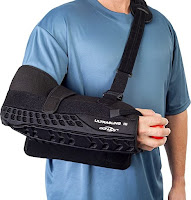Three or four times a week, I jump out of bed, get dressed, and drive to a near-by diner where I have what the help -- who know me all too well -- call "your usual." Two eggs over easy, with ham, potatoes, toast and coffee.
It's enjoyable, although I have health-related doubts about the ham. But it's not what I really crave.
And what do I really crave? Two soft-boiled eggs, boiled precisely four minutes, served in egg cups, and accompanied by a tiny, well-designed egg spoon.
I've just finished reading, for the nth time, an essay by Ursula K. Le Gwin entitled "Without Egg," in her collection of essays No Time to Spare -- an essay that is a virtual hymn to a properly prepared and served soft-boiled egg. She emphasizes, as would I were I to have written the essay, the importance of attention to detail. And the use of the proper implements, especially the dedicated cup and spoon.
You can't really ruin a soft-boiled egg, especially if you also like hard-boiled eggs. But Americans, in general, miss the entire point. Sure, you can scrape the innards out into a dish, salt and pepper them, and eat them with a normal spoon or fork. It will taste the same as a properly consumed egg. But as she points out, you thus miss the entire point:
... it tastes the same but isn't the same. It's too easy. It's dull. It might as well have been poached. The point of a soft-boiled egg is the difficulty of eating it, the attention it requires, the ceremony.
She discusses the egg cup, its appropriate use, and which end of the egg should be up (this last point an apparent matter of some controversy among soft-boiled egg aficianados). Should one saw off the exposed end of the shell? Or whack it off? Le Gwin is an agnostic on this refinement. As am I. Both have their pros and cons.
But then the proper spoon. Americans -- including myself, because often having no choice -- are apt to grab the nearest spoon handy and have at it. They make a mess, and decide that next time they'll dump their eggs into their empty cereal bowl and eat it from there. Le Gwin points out that the egg spoon is made tiny, because it must fit into the small opening you have made in the end of the shell -- the egg spoon is more a surgical instrument than a shovel. Or, as she more delicately puts it, the egg spoon
does one thing only, but does it perfectly and nothing else can do it. Trying to eat an egg from the shell with a normal spoon is like mending a wristwatch with a hammer.
She doesn't point this out, but I find that I can down two fried eggs in a few bites and still be hungry. By the time I've worked my way through two soft-boiled eggs, however, I not only have been forced to eat slowly enough that I enjoy every nuance of flavor, but I find that my appetite is quite satisfied. Although there's always room for a croissant or two.
But maybe Le Gwin understands this also. She calls her essay a blow against double-tasking. The concentration required to properly prepare and eat the egg from a shell precludes unnecessary talking, reading, or daydreaming until the immediate task has been completed. Which is the best way to enjoy any food worth enjoying. She relies on the exhortation in Ecclesiastes that whatever you set out to do (presumably, even eating eggs) you should do with
all thy might, for there is no work, nor device, nor knowledge, nor wisdom, in the grave whither thou goest.
Ursula Le Gwin adds "Nor is there any breakfast there. The grave is without egg." I say she thus has taken a morbid, if amusing turn. I'll just say that if it's worth eating, it's worth eating properly. And my soft-boiled eggs consumed in Europe, with proper spoon and cup, are far tastier than those gobbled down at home.
Having written all that, I find I'm hungry enough to fly to Paris for breakfast. But instead, I'm off in the morning to Santa Rosa for Christmas.
Merry Christmas to all. And eat egg.



















.jpg)








